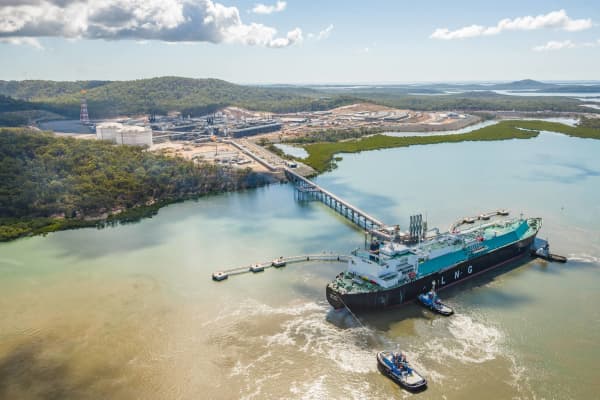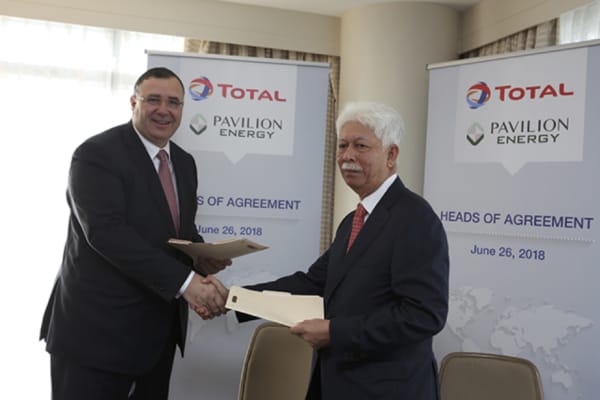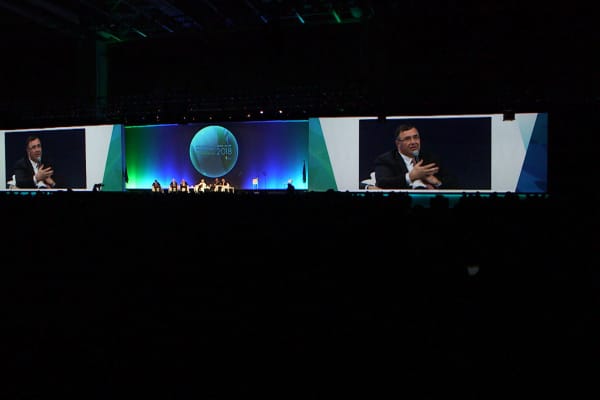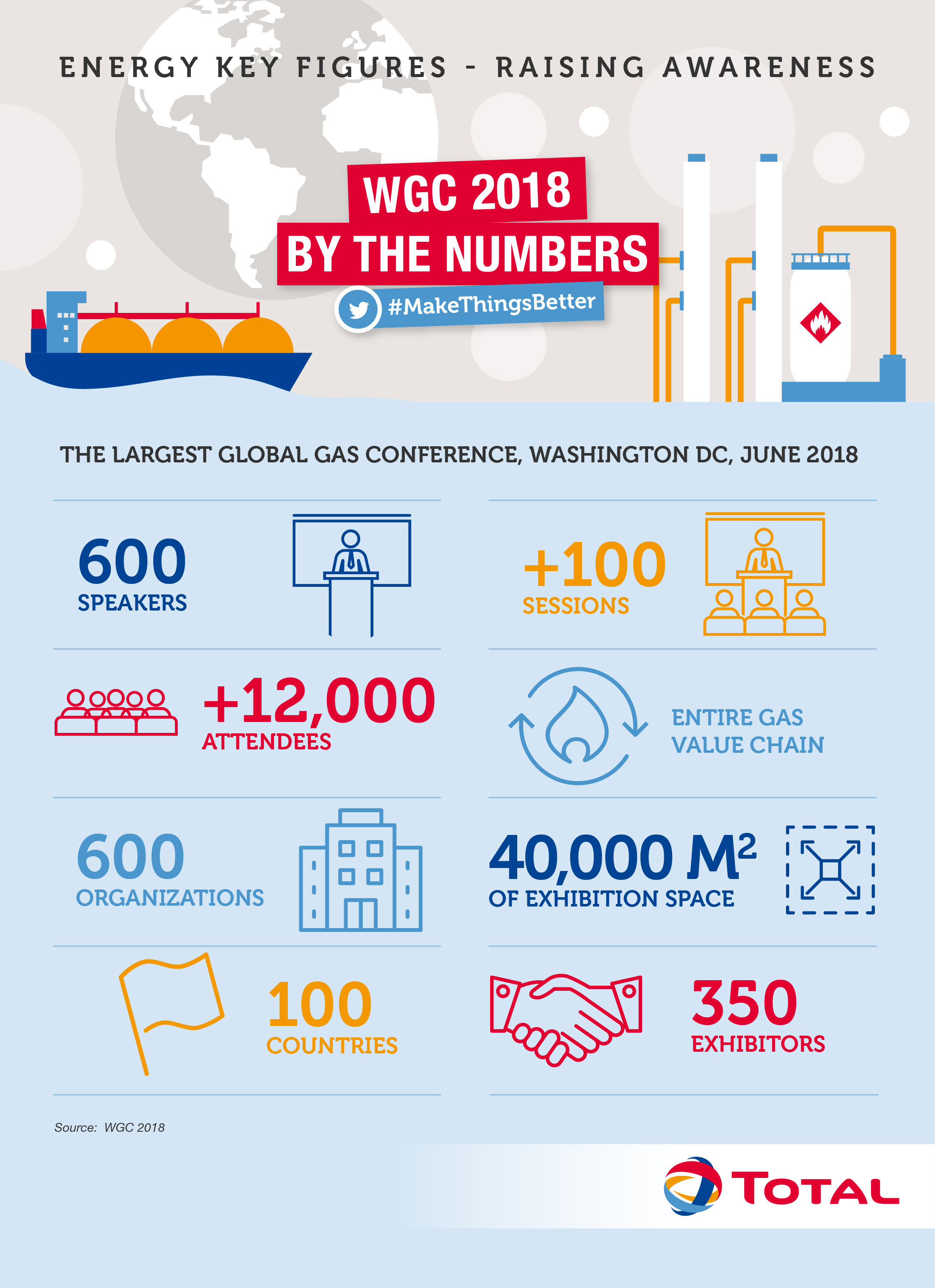Every three years, the International Gas Union organizes the World Gas Conference. It's a perfect opportunity to highlight the relatively unknown financial and environmental advantages of this resource, a fairly recent newcomer in the history of global energy. The event is also an opportunity for Total to reaffirm its commitments to gas, the cleanest fossil fuel, and share the strategy underpinning its ambition to become the responsible energy major.
The 27th World Gas Conference (WGC) took place in Washington, D.C., from June 25 to 29, 2018. Organized by the International Gas Union, which brings together more than 150 members accounting for over 97 percent of the global gas market, its aim is to promote this resource as the cornerstone of a global, sustainable energy system.
The fact that the event was held in the United States is highly symbolic, since the country is the world's largest consumer and producer of gas today. In 2016, the United States produced 749.2 billion cubic meters1 of gas and consumed 778.6 billion. Faith Birol, executive director of the International Energy Agency (IEA), calls this rise of LNG America's "second natural-gas revolution," after shale gas. According to the IEA, more than half of the increase in North American gas production could be exported as LNG by 2022. This would make the United States one of the world's biggest LNG exporters, alongside Australia and Qatar.2
The U.S. is a heavyweight in today's global gas landscape, as Total's Chairman and CEO, Patrick Pouyanné, emphasized just before the event kicked off: "It is highly symbolic that the WGC is taking place here, in the United States, […] one of the world's key exporters of LNG."
He also mentioned that North America was the main beneficiary of "the shale gas revolution. […] 10 years ago, the forecasts were that it would have to import LNG."The biggest change since the 2015 conference in Paris, France, is the reversal between what was then a surplus in LNG supply, and demand, which has since risen, particularly in countries that weren't previously importers, such as Bangladesh, Pakistan and Egypt.
The priority, however, is to continue to focus on demand. Natural gas has yet to find its place in the global energy mix, because it is still competing with cheaper fuels, such as coal, that have a greater environmental impact.
For more on the subject: Total at WGC 2015: Propelling Natural Gas to the Center of the Future World Energy Mix





